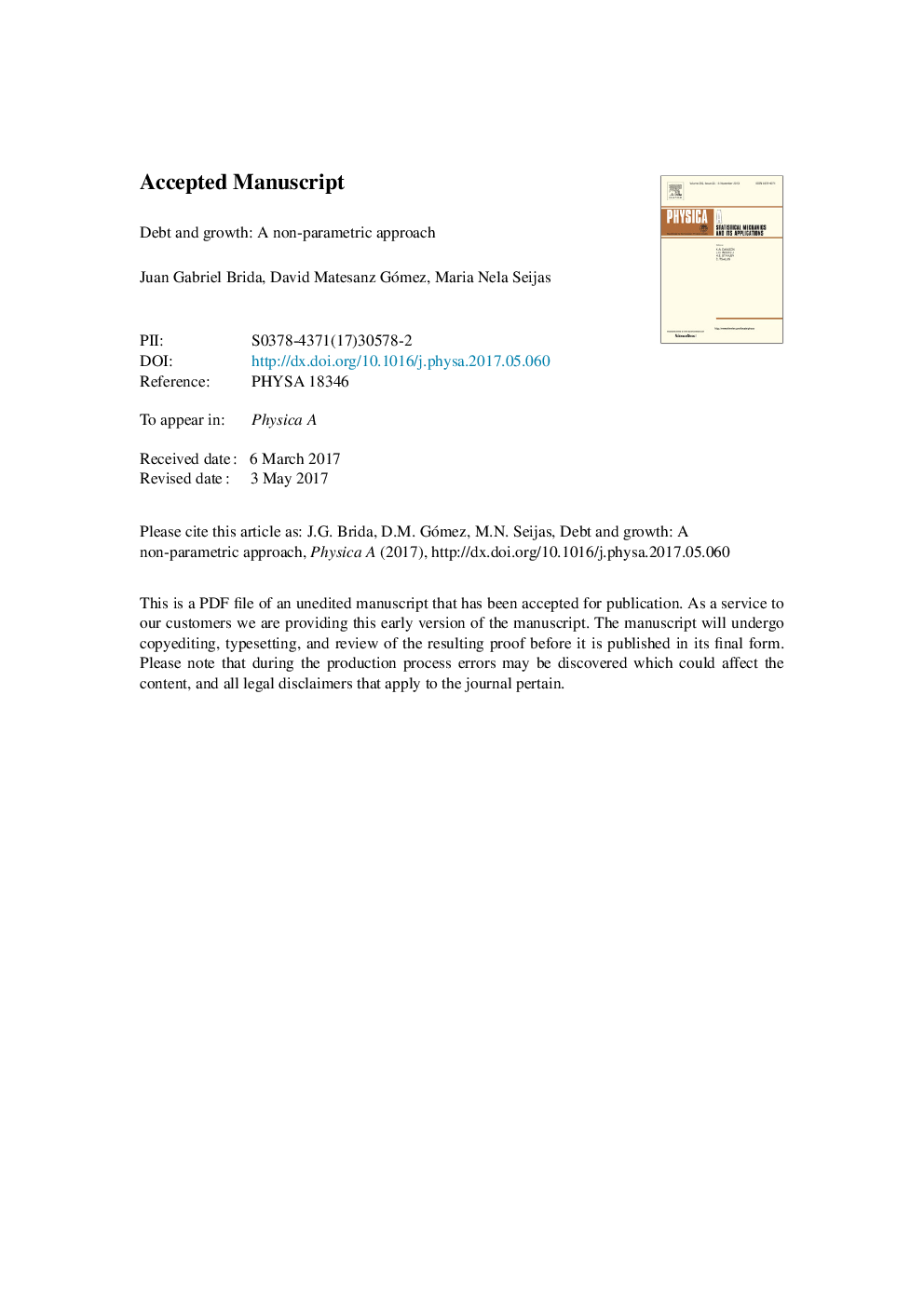| Article ID | Journal | Published Year | Pages | File Type |
|---|---|---|---|---|
| 5102618 | Physica A: Statistical Mechanics and its Applications | 2017 | 25 Pages |
Abstract
In this study, we explore the dynamic relationship between public debt and economic growth by using a non-parametric approach based on data symbolization and clustering methods. The study uses annual data of general government consolidated gross debt-to-GDP ratio and gross domestic product for sixteen countries between 1977 and 2015. Using symbolic sequences, we introduce a notion of distance between the dynamical paths of different countries. Then, a Minimal Spanning Tree and a Hierarchical Tree are constructed from time series to help detecting the existence of groups of countries sharing similar economic performance. The main finding of the study appears for the period 2008-2016 when several countries surpassed the 90% debt-to-GDP threshold. During this period, three groups (clubs) of countries are obtained: high, mid and low indebted countries, suggesting that the employed debt-to-GDP threshold drives economic dynamics for the selected countries.
Related Topics
Physical Sciences and Engineering
Mathematics
Mathematical Physics
Authors
Juan Gabriel Brida, David Matesanz Gómez, Maria Nela Seijas,
